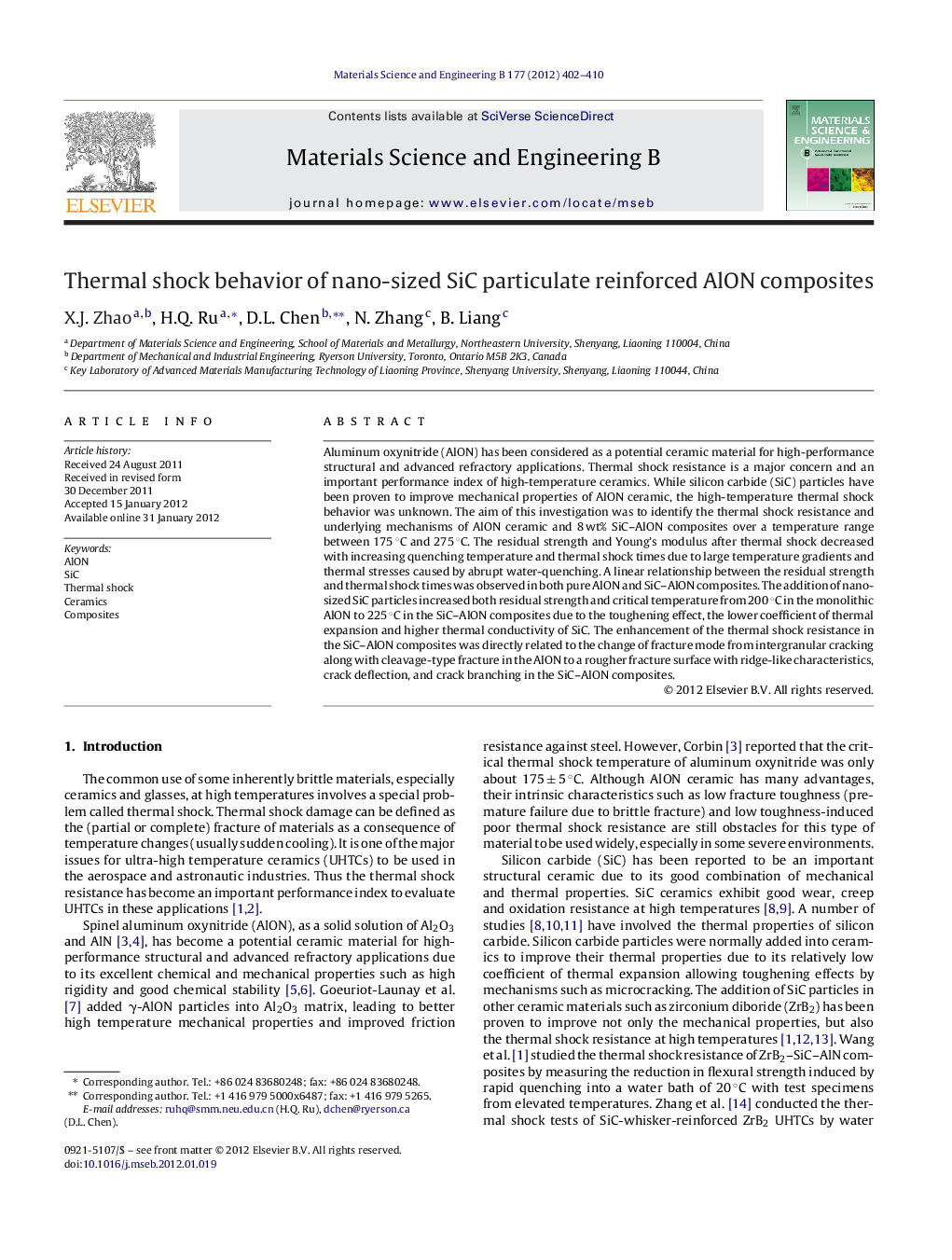| کد مقاله | کد نشریه | سال انتشار | مقاله انگلیسی | نسخه تمام متن |
|---|---|---|---|---|
| 1529514 | 995758 | 2012 | 9 صفحه PDF | دانلود رایگان |

Aluminum oxynitride (AlON) has been considered as a potential ceramic material for high-performance structural and advanced refractory applications. Thermal shock resistance is a major concern and an important performance index of high-temperature ceramics. While silicon carbide (SiC) particles have been proven to improve mechanical properties of AlON ceramic, the high-temperature thermal shock behavior was unknown. The aim of this investigation was to identify the thermal shock resistance and underlying mechanisms of AlON ceramic and 8 wt% SiC–AlON composites over a temperature range between 175 °C and 275 °C. The residual strength and Young's modulus after thermal shock decreased with increasing quenching temperature and thermal shock times due to large temperature gradients and thermal stresses caused by abrupt water-quenching. A linear relationship between the residual strength and thermal shock times was observed in both pure AlON and SiC–AlON composites. The addition of nano-sized SiC particles increased both residual strength and critical temperature from 200 °C in the monolithic AlON to 225 °C in the SiC–AlON composites due to the toughening effect, the lower coefficient of thermal expansion and higher thermal conductivity of SiC. The enhancement of the thermal shock resistance in the SiC–AlON composites was directly related to the change of fracture mode from intergranular cracking along with cleavage-type fracture in the AlON to a rougher fracture surface with ridge-like characteristics, crack deflection, and crack branching in the SiC–AlON composites.
► Addition of nano-SiC particles enhances residual strength and critical temperature.
► Young's modulus decreases with increasing quenching temperature.
► Linear relationship between residual strength and thermal shock times is obtained.
► Rougher fracture surfaces in the SiC–AlON composites are observed.
Journal: Materials Science and Engineering: B - Volume 177, Issue 5, 25 March 2012, Pages 402–410